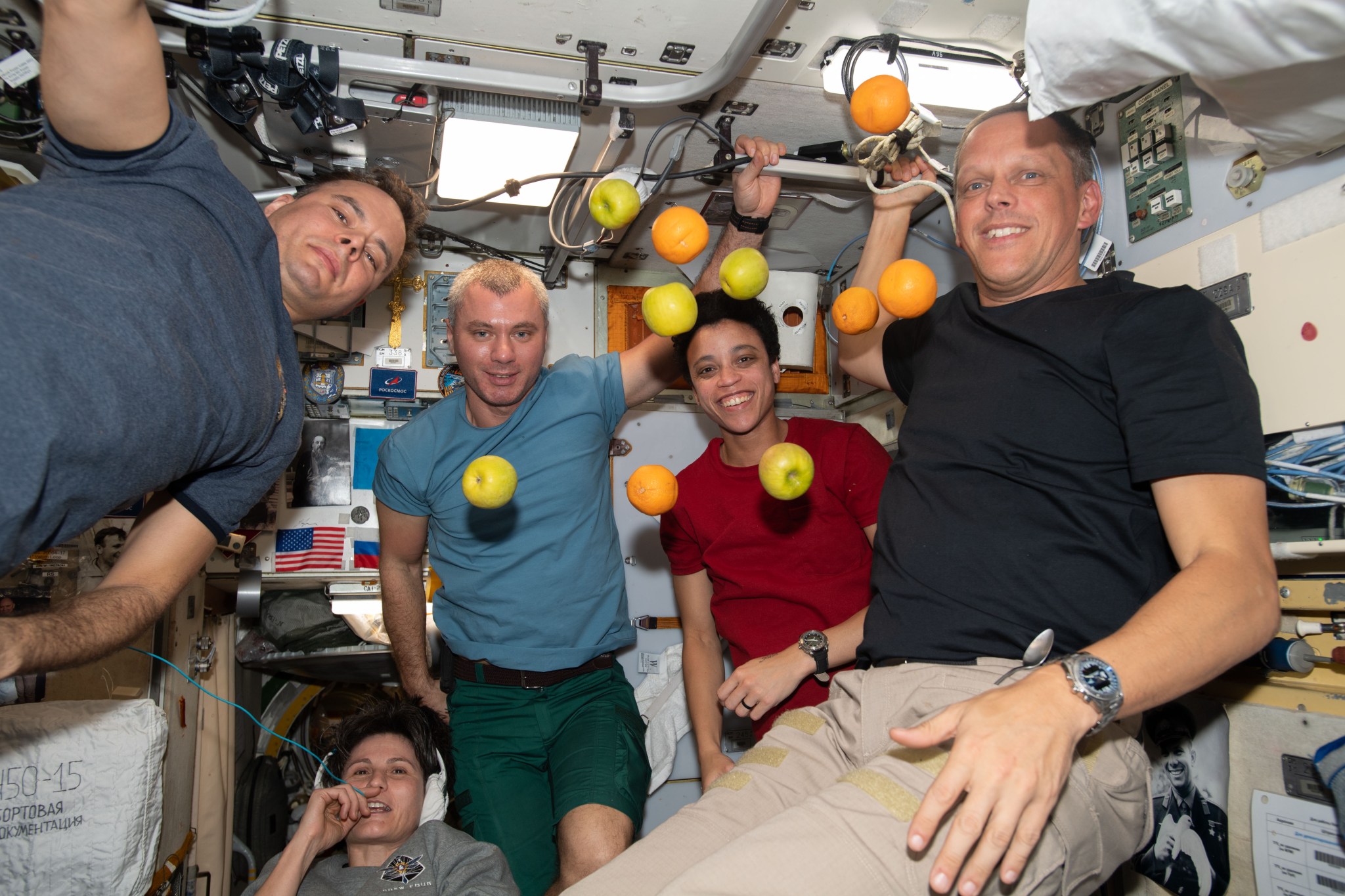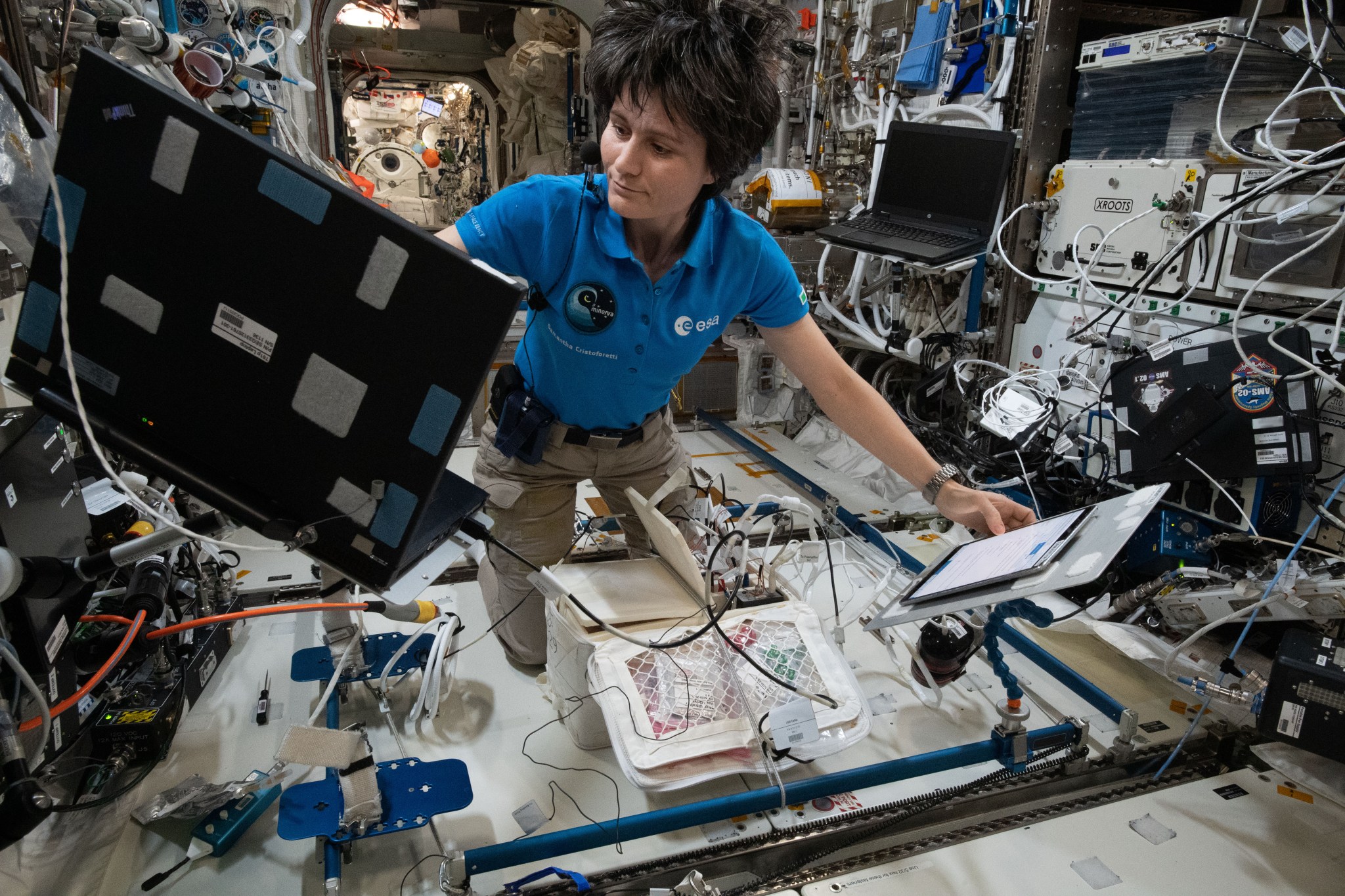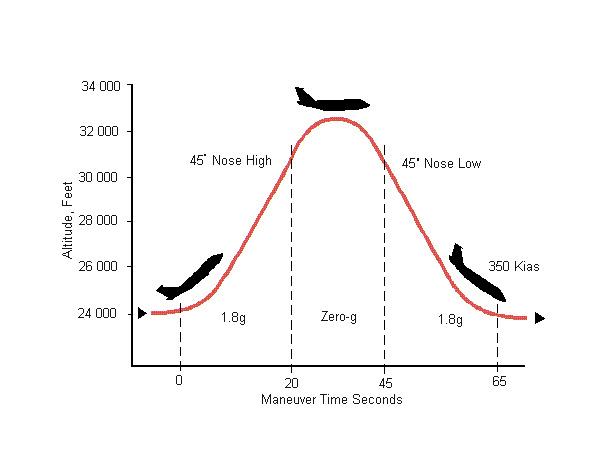This article is for students grades 5-8.
Microgravity is the condition in which people or objects appear to be weightless. The effects of microgravity can be seen when astronauts and objects float in space. Microgravity can be experienced in other ways, as well. “Micro-” means “very small,” so microgravity refers to the condition where gravity seems to be very small. In microgravity, astronauts can float in their spacecraft – or outside, on a spacewalk. Heavy objects move around easily. For example, astronauts can move equipment weighing hundreds of pounds with their fingertips. Microgravity is sometimes called “zero gravity,” but this is misleading.
Is There Gravity in Space?
Gravity causes every object to pull every other object toward it. Some people think that there is no gravity in space. In fact, a small amount of gravity can be found everywhere in space. Gravity is what holds the moon in orbit around Earth. Gravity causes Earth to orbit the sun. It keeps the sun in place in the Milky Way galaxy. Gravity, however, does become weaker with distance. It is possible for a spacecraft to go far enough from Earth that a person inside would feel very little gravity. But this is not why things float on a spacecraft in orbit. The International Space Station orbits Earth at an altitude between 200 and 250 miles. At that altitude, Earth’s gravity is about 90 percent of what it is on the planet’s surface. In other words, if a person who weighed 100 pounds on Earth’s surface could climb a ladder all the way to the space station, that person would weigh 90 pounds at the top of the ladder.
____________________________________________________________________________________________
Words to Know
free fall: the condition of moving freely in an environment in which gravity, and nothing else, is causing acceleration
vacuum: the absence of all matter, including air
mass: the measurement for the amount of matter in an object
____________________________________________________________________________________________
Why Do Objects Float in Orbit?
If 90 percent of Earth’s gravity reaches the space station, then why do astronauts float there? The answer is because they are in free fall. In a vacuum, gravity causes all objects to fall at the same rate. The mass of the object does not matter. If a person drops a hammer and a feather, air will make the feather fall more slowly. But if there were no air, they would fall at the same acceleration. Some amusement parks have free-fall rides, in which a cabin is dropped along a tall tower. If a person let go of an object at the beginning of the fall, the person and the object would fall at the same acceleration. Because of that, the object would appear to float in front of the person. That is what happens in a spacecraft. The spacecraft, its crew and any objects aboard are all falling toward but around Earth. Since they are all falling together, the crew and objects appear to float when compared with the spacecraft.
How Can Spacecraft Fall Around Earth?
What does it mean to fall around Earth? Earth’s gravity pulls objects downward toward the surface. Gravity pulls on the space station, too. As a result, it is constantly falling toward Earth’s surface. It also is moving at a very fast speed – 17,500 miles per hour. It moves at a speed that matches the way Earth’s surface curves. If a person throws a baseball, gravity will cause it to curve down. It will hit the ground fairly quickly. An orbiting spacecraft moves at the right speed so the curve of its fall matches the curve of Earth. Because of this, the spacecraft keeps falling toward the ground but never hits it. As a result, they fall around the planet. The moon stays in orbit around Earth for this same reason. The moon also is falling around Earth.
Why Does NASA Study Microgravity?
NASA studies microgravity to learn what happens to people and equipment in space. Microgravity affects the human body in several ways. For example, muscles and bones can become weaker without gravity making them work as hard. Astronauts who live on the space station spend months in microgravity. Astronauts who travel to Mars also would spend months in microgravity traveling to and from the Red Planet. NASA must learn about the effects of microgravity to keep astronauts safe and healthy. In addition, many things seem to act differently in microgravity. Fire burns differently. Without the pull of gravity, flames are more round. Crystals grow better. Without gravity, their shapes are more perfect. NASA performs science experiments in microgravity. These experiments help NASA learn things that would be hard or perhaps impossible to learn on Earth.
Can Microgravity Be Found on Earth?
For the same reason microgravity exists in orbit, it can also be found on Earth. NASA uses airplanes to create microgravity for short periods of time. The airplane does this by flying in up-and-down parabolas. At the top of the parabola, people and objects inside the airplane are in free fall for about 20-30 seconds at a time. For the same reasons, a person can even experience free fall very briefly going over a large hill, like on a roller coaster. Microgravity also can be experienced in amusement park free-fall rides. NASA also uses drop towers to study microgravity. Objects are dropped using special equipment from the top of these tall towers, experiencing free fall as they drop.





























